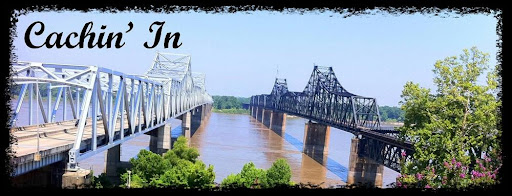 This past weekend I found myself in Big Spring, Texas for a Geocaching event. A while back I attended an event in Austin where the Texas State Park Service had a booth talking about this great geocaching passport program they would be starting up. I knew it was supposed to begin in June but not much else. As I began to plot the caches I wanted to find in Big Spring I ran across this Big Spring State Park cache. The park is small, and nestled in center of downtown Big Spring. Arriving at the front gate you find a small kiosk that mentions that there is no longer any overnight camping allowed in the park. It is strictly a day-use park! I found no place to pay an entry fee so I began a slow winding drive up to the top of the mesa on which the park is located.
This past weekend I found myself in Big Spring, Texas for a Geocaching event. A while back I attended an event in Austin where the Texas State Park Service had a booth talking about this great geocaching passport program they would be starting up. I knew it was supposed to begin in June but not much else. As I began to plot the caches I wanted to find in Big Spring I ran across this Big Spring State Park cache. The park is small, and nestled in center of downtown Big Spring. Arriving at the front gate you find a small kiosk that mentions that there is no longer any overnight camping allowed in the park. It is strictly a day-use park! I found no place to pay an entry fee so I began a slow winding drive up to the top of the mesa on which the park is located.

To access the geocache you park in the small lot for the Nature Trail and bird observation area on your right as you drive into the park. From here it is about three tenths of a mile to the cache with a gradual elevation gain and occasional steps set into the trail. Although it was already about 90F at 10AM I found the walk very nice and easy on the legs and knees. The cache itself is an ammo can with various swag, a log book, some nice color illustrated fact cards about the state parks, and lastly a tethered orienteering punch. To complete the "Big Sky" State Park Challenge you need to find the appropriate geocaches in ten of the twenty parks in this region that includes North and West Texas. There are similar challenges for other regions in the state. There are handy passports to print out on the Texas State Parks website. Just find the cache, answer a question based on the information on the collectible cards in the cache and punch your passport with the orienteering stamp. It's that easy!
A few joggers passed me as I was checking out the cache, but they paid me no real attention. I like the location chosen for this cache as it is not a park and grab and requires a little effort to attain but I wish the container were a little better hidden. I fear it may disappear even though it is clearly marked because it is visible from the trail. Now that I have found my first GeoChallenge cache I am eager to visit more Texas State Parks. When you complete your passport you mail it to the park service for a certificate and a chance at various prizes.
Lastly I hiked over to the observation rim on the north edge of the park and took in a vista of Big Spring and the wind farms out in the distance. It is far from the best vista I have ever seen, but it is amazing how far you can see over the surrounding flat flat terrain. I completed my visit by doing a few of the new Geocaching Challenges. These involve no physical containers to find but rely on you going outdoors and recording yourself doing various activities. There is even a free app for iPhones to keep up with your challenges.
 Here my task was to take a photo of local landmarks with my finger on top of them. This was ackward to do alone but I took a photo of a large wind farm on another mesa to the east.
Here my task was to take a photo of local landmarks with my finger on top of them. This was ackward to do alone but I took a photo of a large wind farm on another mesa to the east.

And here I was tasked with spelling out my Geocaching handle "ZSandmann" with native materials. I chose the abundant mesquite beans to leave my mark.
My wife and I are planning a trip to Balmorhea State Park for Labor Day. So look for that post soon!









